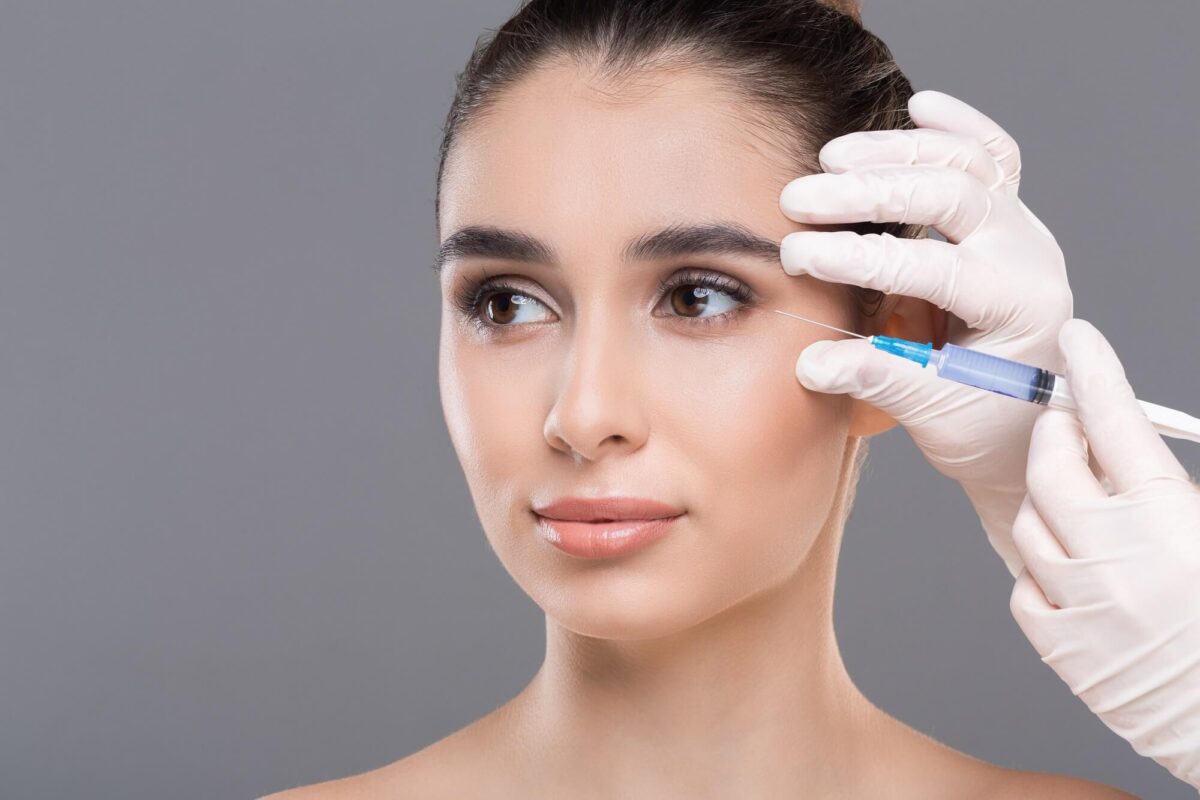
Dermal fillers are a popular cosmetic treatment used to restore lost volume, smooth wrinkles, and enhance facial features. However, concerns about their long-term safety—including the possibility of a link to cancer—have surfaced over the years. But is there any scientific basis for these concerns? Let’s explore the evidence, potential risks, and expert opinions on whether dermal fillers can cause cancer.
What Are Dermal Fillers?
Dermal fillers are injectable substances used to add volume to the skin and reduce the appearance of wrinkles. There are different types of fillers, but the most commonly used are:
1. Hyaluronic Acid (HA) Fillers
2. Calcium Hydroxylapatite (CaHA) Fillers
-
- Brand: Radiesse
- Provides structural support and stimulates collagen production
- Lasts 12–18 months
3. Poly-L-Lactic Acid (PLLA) Fillers
-
- Brand: Sculptra
- Works by stimulating collagen growth over time
- Lasts up to 2 years
4. Polymethylmethacrylate (PMMA) Fillers
-
- Brand: Bellafill
- Semi-permanent, providing long-lasting results
- Contains microspheres that remain in the skin indefinitely
Can Dermal Fillers Cause Cancer?
What Science Says
There is no scientific evidence linking FDA-approved dermal fillers to cancer. Despite the speculation, extensive research and long-term studies have not shown any carcinogenic effects associated with the use of fillers.
However, concerns have been raised regarding:
-
- Chemical Composition
-
- Some fillers contain cross-linking agents like BDDE (1,4-Butanediol Diglycidyl Ether) to improve longevity.
- BDDE has been studied for potential toxicity, but at the levels used in fillers, it is considered safe for human use.
-
- Foreign Substance Reaction
-
- Some people may experience inflammatory reactions or granulomas, which are small nodules formed due to the immune system’s response to the filler.
- These reactions are rare and are not linked to cancer development.
-
- Long-Term Presence of Fillers
-
- Non-dissolvable fillers (e.g., PMMA fillers like Bellafill) remain in the body permanently.
- Long-term effects are still being studied, but no cancer risk has been identified.
-
- Chemical Composition
Potential Health Risks of Dermal Fillers
Although dermal fillers are generally safe, some risks exist, including:
1. Immune System Response
A recent study suggested that hyaluronic acid fillers might interfere with lymphatic drainage, which could lead to:
-
- Prolonged swelling
- Formation of cysts or lumps
- Facial pain
However, more research is needed to determine whether these effects have any long-term health consequences.
2. Granulomas and Inflammatory Reactions
In some cases, the immune system may react to fillers by forming granulomas, but these are not cancerous.
3. Infection Risks
If administered improperly, fillers can introduce bacterial infections, leading to swelling, redness, and discomfort.
4. Vascular Occlusion
A rare but serious complication occurs when a filler is accidentally injected into a blood vessel, leading to tissue damage or, in extreme cases, blindness.
Are Dermal Fillers FDA-Approved and Safe?
Yes, dermal fillers undergo rigorous clinical testing before receiving FDA approval. Regulatory agencies worldwide ensure these products meet strict safety standards before they reach consumers.
To minimize risks:
-
- Choose an experienced provider (licensed dermatologist or plastic surgeon).
- Use FDA-approved fillers from reputable brands.
- Follow post-treatment care instructions to reduce complications.
Debunking Myths About Dermal Fillers and Cancer
1. Do Fillers Contain Carcinogenic Substances?
No. All FDA-approved fillers contain biocompatible materials that are safe for human use.
2. Can Fillers Migrate and Cause Tumors?
Fillers can shift slightly over time, but they do not form tumors or lead to cancer.
3. Can Long-Term Use Increase Cancer Risk?
There is no evidence that long-term filler use contributes to cancer development.
4. Are Permanent Fillers More Dangerous?
While permanent fillers may have a higher risk of complications, they have not been proven to cause cancer.
Frequently Asked Questions (FAQs)
1. Have there been any cancer cases linked to fillers?
No, there are no documented cases of dermal fillers directly causing cancer.
2. Are hyaluronic acid fillers the safest option?
Yes! Hyaluronic acid (HA) fillers are considered the safest because they are naturally found in the body and can be dissolved if necessary.
3. What should I do if I experience unusual side effects after filler injections?
Consult a board-certified dermatologist or plastic surgeon if you notice:
-
- Persistent swelling or lumps
- Pain or redness lasting more than a few weeks
- Any signs of infection (pus, fever)
4. Can fillers increase the risk of lymphoma or breast cancer?
There is no scientific evidence linking dermal fillers to lymphoma, breast cancer, or any other malignancy.
5. How can I reduce risks associated with fillers?
-
- Choose a reputable clinic with qualified practitioners.
- Avoid illegal or black-market fillers (unregulated products may be unsafe).
- Follow proper aftercare instructions to prevent complications.
Final Thoughts: Are Dermal Fillers Safe?
The overwhelming scientific consensus is that dermal fillers do not cause cancer. While there are potential risks like immune reactions and infection, these are manageable with proper medical care.
If you’re considering dermal fillers, ensure that you consult with a licensed professional and use only FDA-approved products. Safety should always be the top priority when undergoing any cosmetic procedure.
Have more questions about dermal fillers? Drop them in the comments below!


